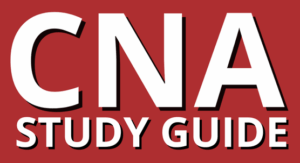Understanding the Responsibilities of a CNA
📝 Master Your CNA Exam with Interactive Quizzes
Ready to test what you’ve learned? Let’s put your knowledge into action.
These interactive multiple-choice quizzes are designed to simulate the real CNA exam experience—so you can feel confident and fully prepared when it counts most.
Built chapter by chapter to align with the CNA Study Guide, these questions will challenge your understanding, help identify weak areas, and reinforce the key information you’ll need on exam day.
🔍 Why Practice Quizzes Matter:
-
✅ Simulate real exam pressure in a low-stress environment
-
✅ Apply what you’ve studied in real-time scenarios
-
✅ Reinforce learning with immediate feedback
-
✅ Identify gaps in your knowledge before the real test
-
✅ Increase confidence and reduce test anxiety
💡 How to Use These Quizzes:
-
Select the quiz for the chapter or topic you want to test
-
Read each question carefully and choose the best answer
-
Submit your answers to see your results instantly
-
Review all rationales (if provided) and note the areas to improve
-
Repeat quizzes regularly to boost speed and accuracy
Results
#1. What is the primary role of a Certified Nursing Assistant (CNA)?
Correct Answer: C
Rationale: CNAs assist patients with personal care needs and daily living activities. They do not diagnose, prescribe, or perform surgery.
#2. Which of the following is a key component of respecting patient confidentiality?
Correct Answer: C
Rationale: Confidentiality means patient information should only be shared with staff directly involved in their care.
#3. A CNA observes a patient having difficulty swallowing during meals. What should the CNA do first?
Correct Answer: B
Rationale: Any signs of swallowing difficulty (dysphagia) require immediate attention to prevent choking or aspiration.
#4. Which body system is primarily responsible for moving oxygen through the body?
Correct Answer: B
Rationale: The respiratory system allows for oxygen intake and carbon dioxide removal, essential for cellular function.
#5. When a CNA helps a patient move from bed to wheelchair, they should always:
Correct Answer: C
Rationale: Gait belts and safe body mechanics help prevent injuries for both patient and CNA.
#6. What does PPE stand for?
Correct Answer: C
Rationale: PPE includes gloves, gowns, masks, and other gear used to protect both patients and staff from infection.
#7. What is the best way to prevent the spread of infection?
Correct Answer: C
Rationale: Hand hygiene is the single most effective method of infection control in all healthcare settings.
#8. Which of the following is an example of a patient’s right?
Correct Answer: B
Rationale: Patients have the right to refuse care or treatment, even if it’s medically advised.
#9. A CNA is asked to perform a task they are not trained for. What should they do?
Correct Answer: C
Rationale: CNAs must work within their legal scope of practice and should defer unfamiliar tasks to licensed staff.
#10. Which of the following is considered an ADL (Activity of Daily Living)?
Correct Answer: C
Rationale: Bathing, grooming, feeding, and toileting are core ADLs that CNAs regularly assist with.

